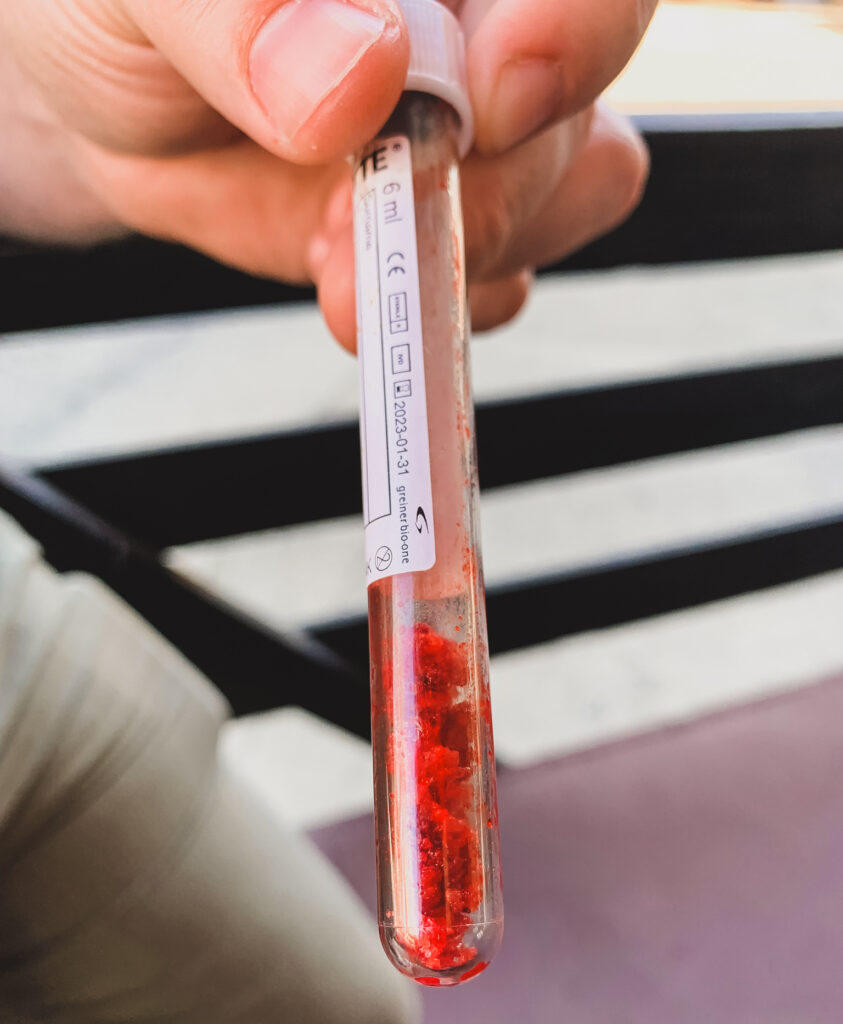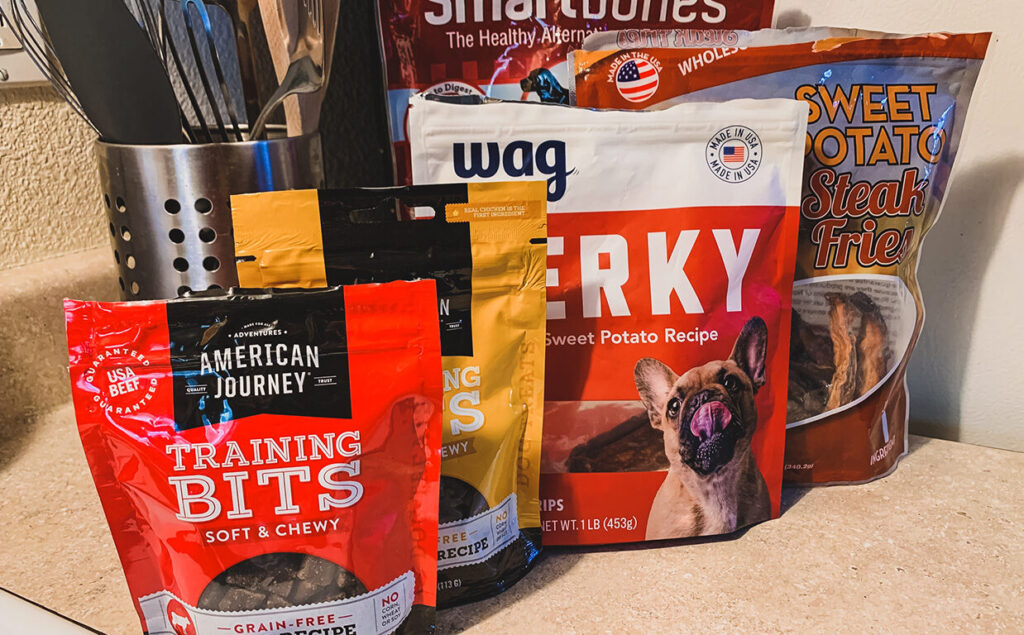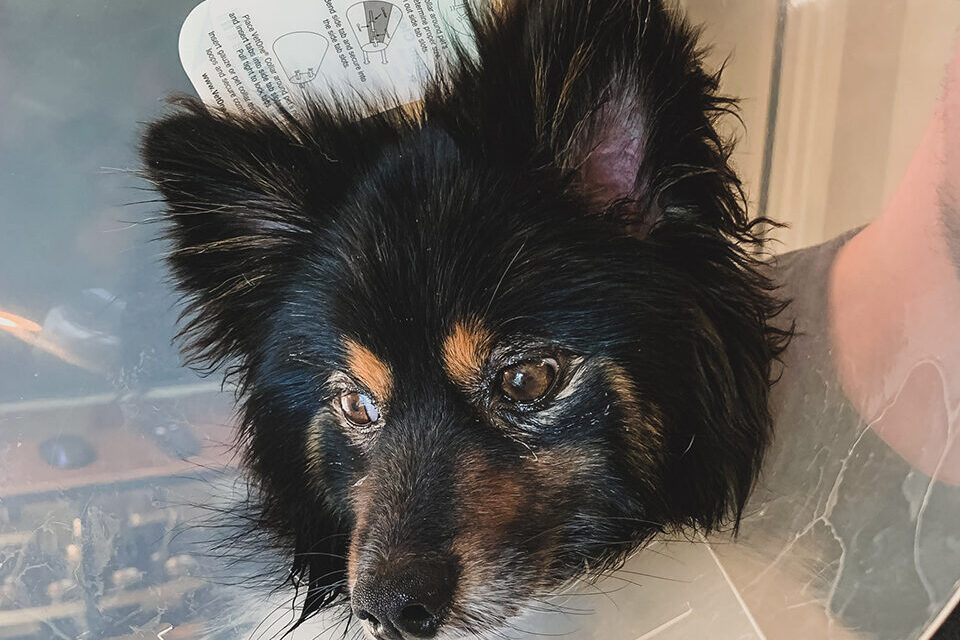Bladder stone surgery in dogs (also known as a cystotomy) was performed on our Pomeranian mixed breed dog six months ago.
Thankfully, Turtle Dove is now thriving, but there was a time when things were uncertain and quite ‘rocky.’ Literally! Bladder stones, also known as cystic calculi or uroliths, had formed in his urinary bladder. The journey from that diagnosis to his current health was a rollercoaster, but the sight of him bouncing back, filled us with relief and joy, and we hope it brings you the same sense of hope for your own furry friends.
As a dog only two years old at the time, we were shocked when we heard our little dog needed to be put under and have a full cystotomy performed.
Table of Contents
Urinary Incontinence to Bladder Stone Surgery in Dogs
Our journey began when we noticed our Pomeranian was struggling to urinate, a condition known as dysuria.
This early sign was crucial, as it led us to seek immediate medical attention, potentially saving our dog’s life. It’s a testament to the power of early detection in managing our pets’ health, and it made us feel proactive and responsible. We want to empower you with the same knowledge and responsibility for your pet’s health.
For a few days, he struggled to pee. When doing so, he was only able to urinate in small amounts. We noted this as odd and took him to the bathroom more often.
At the end of the week, and very uncharacteristic of our pup, he had an accident in the house. Later that same day, we noticed blood in his urine, also known as hematuria. We called the vet here in Sacramento and rushed our dog for an emergency appointment.
From the appointment and after doing x-rays and other tests, they found our dog had a large number of bladder stones accumulated, filling roughly 70% of his bladder.
The vet explained that our dog needed immediate surgery to remove the stones, as their presence posed a serious threat to his life. This stark reality underscored the importance of timely action in such situations.
They explained that hematuria occurs when bladder stones start rubbing up against the bladder wall, causing irritation and tissue damage. If the case isn’t severe or there is no blockage, bladder stones can sometimes be resolved through urohydropropulsion (a non-surgical method) or through dietary dissolution.
As a male dog, our Pomeranian was at even greater risk of complications or death if we didn’t have the stones removed. Stones can become lodged in the space between the bladder and urethra and cause a partial obstruction. Bladder stones can also get stuck in the urethra and form a complete blockage that stops a dog from urinating, causing bladder rupture and possible death.
We opted to move forward with the cystotomy surgery immediately.
Fortunately, we scheduled the bladder stone surgery for the following day.

Recovering from Bladder Stone Surgery in Dogs
I dropped our dog off at the vet the following day, and they told me they should complete the surgery within a few hours.
After the surgery, they would call to update us on how everything went and when we could come to pick him up.
The surgery was a resounding success, and the report was as follows:
- ventral midline incision was made cranial to previews.
- Urinary bladder was isolated and retracted using stay sutures.
- An 11 blade was used in surgery to make a stab incision into the bladder. A large curette was used to scoop stones out of the bladder ranging in size from Sand-like material to approximately 2 millimeters in diameter.
- The amount of stones was too numerous to count.
- A 5 French Red Rubber catheter was placed within the urethra and urethrostomy zones were flush back into the bladder using urethera retropulsion.
- Suction was used to remove any remaining Stone material. The bladder incision was closed using 20 monocryl on a tapered needle in a simple continuous pattern with a Cushing’s over so.
- Abdomen was checked for potential contamination and a 3-layer routine closure was performed.
- Stones sent for analysis.
Although he was groggy and tired from surgery, we were so excited to get him and bring him home.
For two weeks post-surgery, we gave our dog various antibiotics and pain medication; Clavamox, Vetprofen, and Gabapentin.
During the postoperative process, we were instructed to keep our dog in its cone for two weeks, minimize movement, and restrict jumping or walking up and down steps. We also had to monitor his incision site for any signs of infection, ensure he took his medications as prescribed, and provide a comfortable and quiet environment for his recovery. This diligent care and patience were crucial in our dog’s recovery, and it’s a reminder to all dog owners that the postoperative period is just as important as the surgery itself.
For the first three days after surgery, our dog was sore and suffered from occasional incontinence while the bladder healed. Prepare yourself for a slightly messy experience. We were told it’s normal for some blood to pass and incontinence to occur the first few days after surgery.
After the first 3–5 days, we found Turtle Dove began rapidly improving and gaining energy.
It’s also essential to routinely check the incision site to ensure no infection is forming with signs of discharge or bleeding and confirm that all sutures are holding. In this case, his sutures dissolved on their own after a month, and didn’t require removal by the veterinarian.

Minimizing the Chances of Recurring Bladder Stones in Dogs
After analysis, the bladder stones were found to be 100% magnesium ammonium phosphate hexahydrate, which are also known as struvite bladder stones.
Ultimately, bladder stones are crystals that have precipitated out of the urine due to increased levels of specific elements in a dog’s urine. When there’s a pH or acidity imbalance, the crystals may appear and start to get bigger and bigger after a while.
There are five different bladder stone types, including:
- struvite
- urate
- xanthine
- cystine
- calcium oxalate bladder stones
Every stone starts to form because of different factors, ranging from infection to diet, to diseases that may have existed previously.
Since our dog’s bladder stones were struvite, they were most likely caused by a bladder infection.
Additionally, we moved our dog to a special diet these past six months.
This ensures all struvite stones dissolve and don’t recur in the chance the stones were formed due to a diet imbalance. We currently feed Royal Canin Urinary SO. This specific Royal Canin dog food is formulated to be more acidic to help break down stones and withholds magnesium, proteins, and phosphorus, the building blocks of bladder stones.
We also found that many treats we were giving our dog before his bladder stone diagnosis contained sweet potato as the primary ingredient. Sweet potatoes have high levels of oxalate, a compound that may increase the chances of bladder stones forming.
We’ve since thrown away these treats and stuck to alternatives.
Soon, we’ll review with our veterinarian to see if it’s time to come off the special diet or continue. Antibiotics may also be prescribed periodically, along with urinalyses, to ensure bladder stones aren’t recurring.
Ultimately, going through cystotomy with our dog was worth it to save his life. Although I’m crossing my fingers we don’t have a repeat.
Notice: The information contained in this article should not be used as a substitute for professional advice. Please consult your veterinarian in all matters related to your pet’s health. This disclaimer ensures that you seek professional guidance for your pet’s specific condition and treatment.
How long is recovery from bladder stone surgery in dogs?
Usually, it takes two weeks for a dog to recover fully from bladder stone surgery.
After the first 3–5 days post-surgery, dogs tend to improve rapidly and return to more normal behavior.
Since our dog was young, he healed rather quickly during the postoperative process. The difficulty kept him from being too rowdy in his second week of healing. Make sure never to leave your dog unattended post-surgery, as they can sometimes get out of their Elizabethan collar and bite at their incision site.
What can you expect after your dog has bladder stone surgery?
It can be expected for a dog to refuse food or drink a day or two after bladder surgery. If you’re concerned, don’t panic, and call your veterinarian to confirm normal behavior or signs of potential complications. Additionally, you may see a slight discharge of blood in the urine post-surgery, but it should be minimal and not long-lasting.
How much is dog surgery for bladder stones?
Total costs for our dog’s cystotomy surgery for bladder stones and supporting analysis, postoperative care and medications were $2,300.
The breakdown of these costs includes:
- Cystotomy – $1,500
- Crystallographic Analysis – $145
- Surgical Panel with Fluids – $150
- X-Ray with Two Views – $287
- Hydromorphone – $20
- Cerenia Injectable – $42
- Cefazolin Injectable – $25
- Midazolam Injectable – $20
- Alfaxan – $24
- Rimadyl Injectable – $23
- Clavamox Liquid – $31
- Vetprofen – $20
- Gabapentin – $32
- Elizabethan Collar – $11
Additionally, it was $400 for the initial emergency visit before the surgery.
These costs included a $180 emergency exam fee, urinalysis ($75), x-ray ($85), Convenia injectable ($30) and a Meloxicam prescription ($36).
We pay $300 yearly for Lemonade pet insurance. Unfortunately, $0 was covered, as signs of a pre-existing gastrointestinal condition were noted in our Pomeranian before the coverage date. $3,000 is the total cost for the emergency visit, and bladder surgery was a massive bill to swallow and fit into our yearly budget, and still recovering from the upset.
Are bladder stones in dogs life-threatening?
Yes! Bladder stones in dogs can be life-threatening, as the stones can completely block urine from passing through the bladder and urethra and lead to a bladder rupture.
When a dog experiences a complete blockage, it prevents the bladder from emptying, which can cause it to swell and eventually rupture if not treated promptly.
This situation is a medical emergency and requires immediate veterinary intervention to prevent severe complications or death.
Potential Complications of Bladder Stones:
- Urinary Obstruction: Stones can obstruct the urinary tract, making it impossible for the dog to urinate. This can lead to acute renal collapse and systemic illness.
- Bladder Rupture: If urine cannot exit the bladder, the pressure may cause the bladder to rupture, leading to peritonitis, a life-threatening infection of the abdominal cavity.
- Infections: Stones can irritate the bladder lining, leading to infections that may ascend to the kidneys, causing pyelonephritis, which is a serious kidney infection.
Importance of Timely Diagnosis and Treatment
Early detection and treatment of bladder stones are crucial in preventing these severe outcomes.
Regular veterinary check-ups and prompt attention to symptoms such as difficulty urinating, blood in the urine, or frequent urination attempts can help catch this condition before it becomes life-threatening.
Post-Surgery Care and Prevention
After a successful cystotomy, ongoing care and dietary adjustments are essential to prevent the recurrence of bladder stones.
Special diets designed to alter the pH of the urine and reduce the components that form stones can be very effective. Regular monitoring, including follow-up veterinary visits and periodic urinalyses, is crucial to ensure your dog’s urinary health remains stable.
Dietary Management
- Prescription Diets: Foods like Royal Canin Urinary SO or Hill’s Prescription Diet c/d can help manage and prevent bladder stones.
- Hydration: Try to get your dog to drink lots of water to help flush out the urinary system and prevent stone formation.
Medications and Supplements
- Antibiotics: May be necessary to treat or prevent urinary tract infections that can contribute to stone formation.
- Supplements: Some supplements can help maintain urinary health, but always consult your vet before adding anything new to your dog’s regimen.
By understanding the severity of bladder stones and taking proactive steps to manage your dog’s health, you can minimize the potential for life-threatening complications and ensure a better quality of life for your pet.





